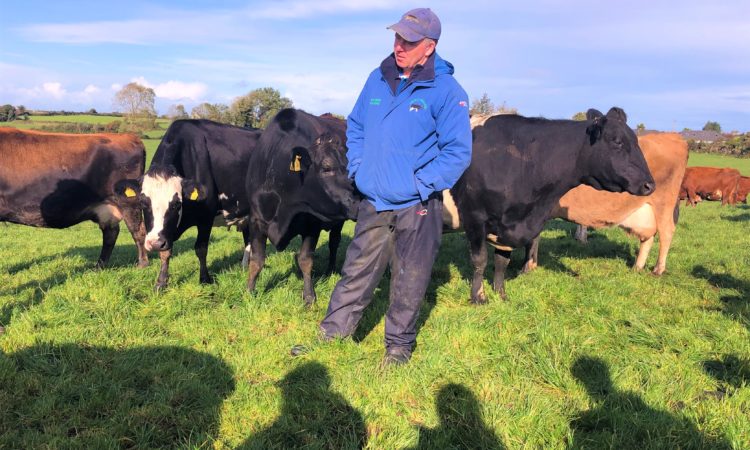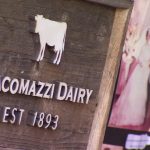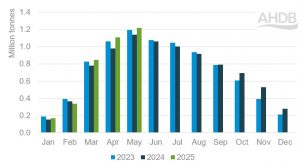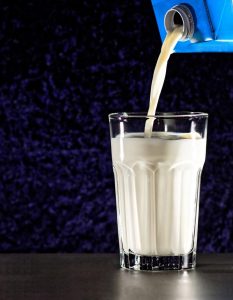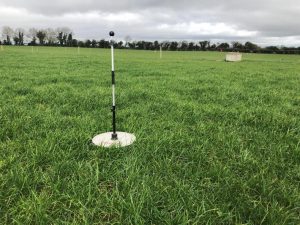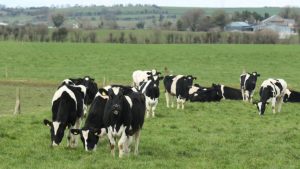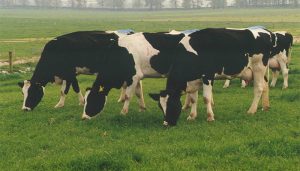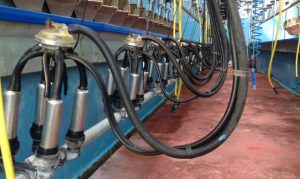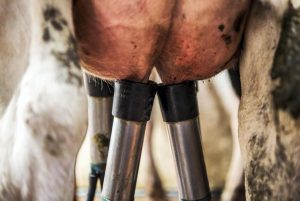
Previously, Eamonn was a liquid milk supplier; but, after acquiring some neighbouring land and increasing his herd size, he decided to leave liquid milk and move over to creamery milk production.
The next big change for Eamonn happened last year, when he lost 27ac of his milk platform, leading to his decision to change over to OAD milking.
Speaking at a recent open day on his farm – held by LIC Ireland – Eamonn said: “After losing the land I only had 40ac around the parlour with the rest located across a road. To get to the furthest part of the farm, I actually had to cross two roads and it would take me an hour and a half twice-a-day (TAD).
I had so much walking to do, I just knew it wasn’t feasible; so I moved to OAD. It was the best decision I have ever made.
The transition from TAD over to OAD was relatively easy for Eamonn, with the exception of the first night.
“The first time I went OAD, they roared the place down the first night. The neighbours came into me wondering what was wrong. They did that for two nights and I had no problems after that,” joked Eamonn.
Currently milking on the farm is a herd of 142 cows. It is predominantly made up of Kiwi-cross and Jersey-cross cows with an average EBI of €127.
Performance Of The Herd Since The Move
Commenting on the performance of the herd since the move to OAD, Eamonn said: “In the first year, there was a 16% drop in milk solids – from 473kg of MS/cow down to 390kg of MS/cow.
But this year I am back up again, with the expectation to reach over 400kg of MS/cow this year.
The meal input last year was 800kg/cow with 550kg/cow fed to date this year. “I like to feed the cow as if she is being milked TAD – to keep her going,” he said.
Looking at the performance of the herd – so far for this year – between January and August the herd produced 289kg of MS/cow at an average fat of 4.73% and protein of 3.9%.
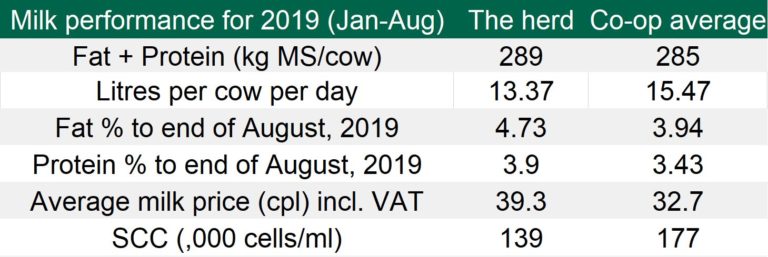
In turn, achieving an average milk price of 39.3c/L; 6.6c/L above the Kerry Co-op average.
Through ‘weeding out’ the cows, which he feels are unsuitable for OAD, Eamonn thinks his herd will then have the potential to reach 450kg of MS/cow in the future.
I have 11 cows dried-off since September; they just shut down. So, they aren’t really suitable for OAD. Through breeding off the better cows I think 450kg of MS/cow is very achievable.
On the day of the visit, the herd was doing 1.15kg of MS/cow at 4.15% protein and 5% fat.
During the walk, one farmer asked: ‘Did changing to OAD have any impact on your somatic cell count (SCC)?’ Answering, Eamonn said: “No, to be honest it didn’t. Last year, after going OAD, my SCC actually came down a bit.
“My SCC was 153 on average last year. This year it has crept up a bit – especially in the last month – it is up at 250 now.”
The Herd
Traditionally, the herd was made up of predominantly Holstein-Friesian cows. However, in 2009, he made the decision to begin crossbreeding the herd with Jersey and, after that, he said his solids improved year-on-year.
Since then, he has started to introduce New Zealand genetics to the herd through the introduction of Kiwi-cross bulls from LIC.
“I use Kiwi-cross bulls on the majority of the cows now. But, on a more Jersey-type cow I’ll use a Friesian. I’d say it is about one-third Holstein-Friesian and two-thirds crossbred at this stage and I try to keep it at that,” said Eamonn.
Explaining what an ideal OAD cow is for him, he said: “The negative for milk is a big no no; I’d like to always have a positive.
“I find the cows which have a negative for milk put on too much condition. They get fat and then you find them drying up. I brought in 13 heifers this year and three of them were negative for milk; they are all dry now.
“Some cows by September you just see them going dry and then, a week later, she would be bone dry. That happened to about 10% of the herd.
“Another issue is udders. If they don’t have good udders, then they aren’t really suitable. I have noticed this year that the clusters on some of them are scrapping off the ground.
“Although a cow on TAD could be good on OAD; I don’t see a huge difference,” he added.
Grassland Management On OAD
Despite being located in the west of Ireland, Eamonn’s farm is a relatively dry farm with his cows going out to grass as they calve. To date, virtually no silage has been fed with the expectation to continue grazing until the end of November.
This year, 12.5t DM/ha has been grown on the farm and he is hoping to reach 14t DM/ha by the end of the grazing season.
The whole farm stocking rate is 2.7LU/ha with all heifers contract reared by Eamonn’s brother – who also purchases his bull calves and rears them through to slaughter.
During the walk, one farmer asked: ‘Did going OAD change your stocking rate?’ Answering the question, Eamonn said: “The whole system changed, because before I didn’t call the far land across the road my milking platform. I was stocked at 3.5LU/ha on what I called my milk platform.
“But, I find there is great comfort being stocked at 2.7LU/ha. I am sort of self sufficient. I am not under pressure at any stage for feed. It is just an easier way of farming.”
Another farmer asked: ‘Did going OAD change your grazing management?’ Explaining this, Eamonn said: Yes, I think it did. With OAD you don’t mind putting them back to a paddock after milking in the morning and forcing them to graze it out; then moving them on later in the evening.
“On TAD, if you put them back to a paddock to clean it out you would feel it in the tank that evening; but on OAD if you put them back to a paddock for a few hours then moved them on, there is no difference.”
However, Eamonn explained that they are usually grazed in 24-hour blocks, or 36 hours if needs be.
Benefits Of Moving To OAD
Many farmers associate OAD with huge costs savings; however, Eamonn admitted that he hasn’t seen any huge costs savings just yet – except for the reduction in meal feeding of 200kg/cow.
Where he has seen the biggest saving is on labour and his time; while also creating a better lifestyle for himself and his family.
Labour and your time is the big saving; just creating a better lifestyle for yourself.
Answering the question: ‘Have you seen any improvements in the quality of life since moving to OAD?’ Eamonn said: “Absolutely; if the wife wants to go somewhere in the morning, from 11:00am I am free to go wherever – if she wants to bring me off somewhere.
“I’d never go back to TAD. I was having the dinner yesterday and I said if I had to go out and milk the cows now, it would kill me,” he joked.
